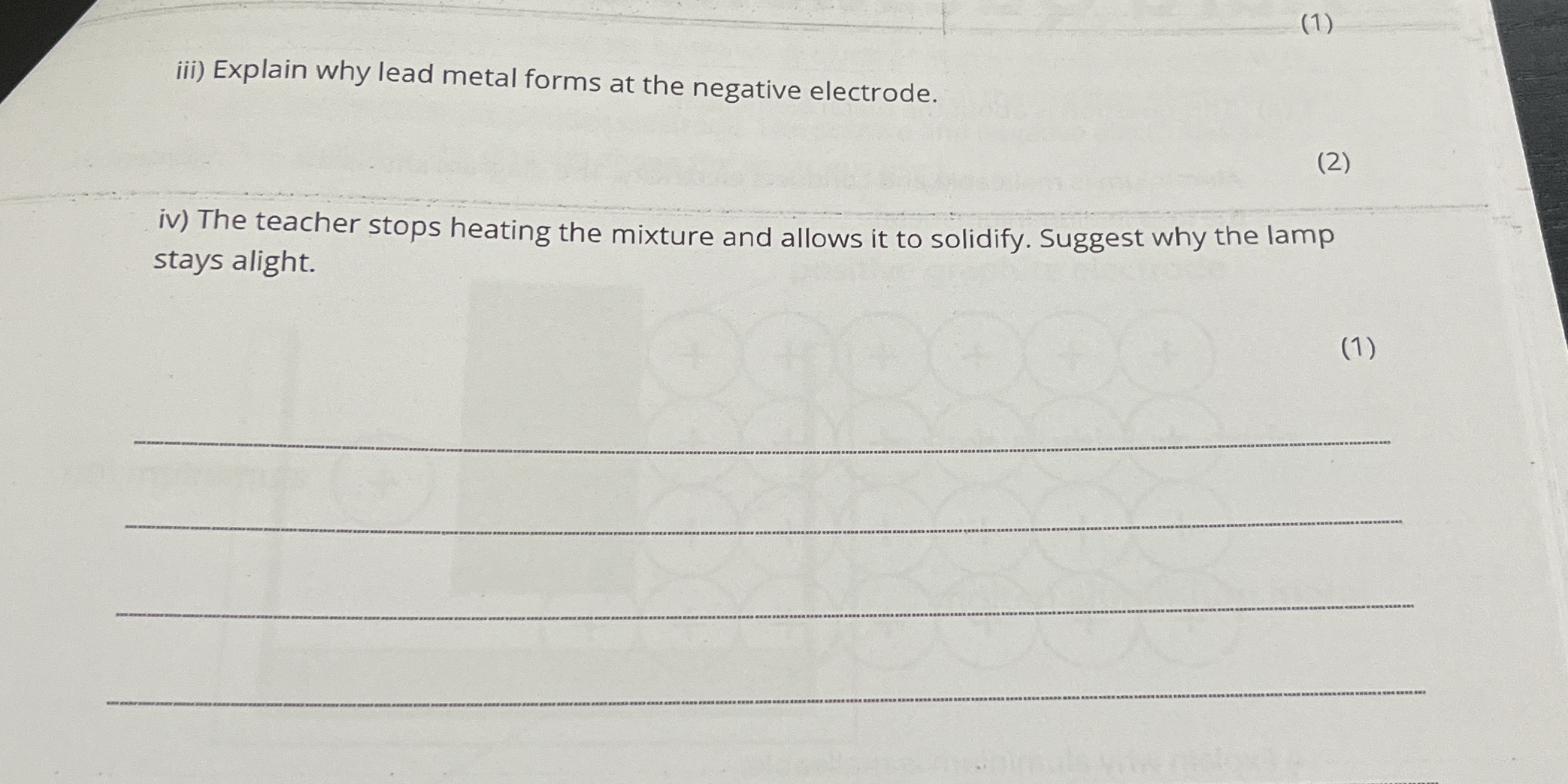Explain why lead metal forms at the negative electrode. The teacher stops heating the mixture and allows it to solidify. Suggest why the lamp stays alight.

Understand the Problem
This question delves into the principles of electrolysis, specifically focusing on why lead metal is deposited at the negative electrode (cathode) during an electrolytic process. The question requires an explanation of the electrochemical processes involved and the roles of ions and electrons in the deposition of lead. Next, the question asks why a lamp stays alight even after heating has stopped and the mixture begins to solidify. This involves understanding heat transfer, phase changes, and energy release within the system.
Answer
Lead ions are positively charged, attracted to the negative electrode, gain electrons, and are reduced to lead metal. The lamp stays alight due to continued ion mobility in the solidifying mixture.
Lead metal forms at the negative electrode because lead ions (Pb^2+) are positively charged and are attracted to the negative electrode. At the electrode, lead ions gain two electrons and are reduced to lead metal (Pb). The lamp stays alight because ions are still mobile when the mixture solidifies, allowing continued electrolysis.
Answer for screen readers
Lead metal forms at the negative electrode because lead ions (Pb^2+) are positively charged and are attracted to the negative electrode. At the electrode, lead ions gain two electrons and are reduced to lead metal (Pb). The lamp stays alight because ions are still mobile when the mixture solidifies, allowing continued electrolysis.
More Information
Reduction occurs at the cathode, where positively charged ions gain electrons to form a neutral metal. Even after heating stops, the mixture remains hot enough to keep it molten, allowing ions to move and electrolysis to continue until it cools down.
Tips
A common mistake is to confuse oxidation with reduction, remembering that OIL RIG (Oxidation Is Loss, Reduction Is Gain) helps.
Sources
AI-generated content may contain errors. Please verify critical information